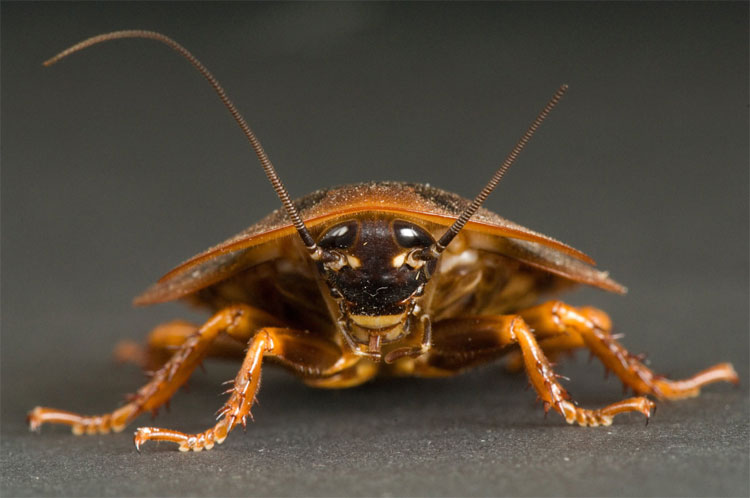Small animals are resistant to radiation
With extraordinary stamina, many animals are not at risk of destruction by radiation and can continue to grow and develop even in the presence of a nuclear war.
Radiation affects cells in humans and other mammals by acting on genetic material, DNA . Our genetic material is damaged and aging over time, but the body has a mechanism to repair damaged DNA itself.
But the radiation will cause serious damage that makes the body unable to repair itself. And in the worst case, it can cause uncontrolled cell division, called cancer.
The Water Bear Beetle, also known as tardigrade , is an extremely resistant bacterium that can survive in the harshest conditions. They can be crushed, frozen, subject to boiling water, live in space and water-free. This animal can revive after 10 years of death. They are very small, have a length of 1.55mm and are less likely to be affected by radiation.
Both humans and mammals suffer the same effects of radiation and genetic damage. However, animals such as crabs and mollusks are more resistant to radiation than mammals.

Small animals are able to resist radiation because they are able to regenerate cells very quickly.(Image source: dispatch).
Parasitic wasps are a bee family specialized in laying eggs inside other species. They are one of the most life-sustaining creatures on Earth because of their ability to withstand up to 180,000 radioactive units. They can also be trained to sniff chemicals and explosives like professional dogs.
People, plants and animals are always exposed to a certain amount of radiation . Continuous radiation emitted from the ground and aerospace. Humans also carry a small amount of radioactive isotopes inside the body.
The cockroaches were able to withstand radiation and were found not far from the place of Hiroshima nuclear bombs while all other creatures were wiped out. The ability of cockroaches to survive is a result of slow growth. The cells in their bodies regenerate every 48 hours, helping to lower the risk of mutations.
Scorpions are not affected by ultraviolet radiation. Therefore, many scientists identify them as being subject to nuclear radiation. The scorpion also glows in the dark night and is likely to freeze pending the later revival.
Ligulata is a terrestrial hand-rolled animal that has a crust in the upper and lower parts. This animal survived many great extinctions without any effect and lived longer than 99% of the creatures that existed on Earth.
Fruit flies can tolerate about 64,000 radioactive units. The small body size causes them to have less radiation-affected cells and smaller radioactive absorbing surfaces.
Mummichog is different from common fish in that they can live in any environment regardless of pollution, heat, cold or full of chemicals. They were once taken to the space station and survived. According to scientists, this fish can regenerate body parts to easily cope with the new environment, thereby enhancing survival.
- Russia invented a radiation-resistant vaccine
- Bacteria live millions of years on Mars
- Why are cockroaches tolerant to radiation but destroyed by insecticides?
- Anti-radiation shorts
- How dangerous is radiation?
- 7 animals are cold resistant under 0 ° C best on the planet
- Inoculate the stool to kill resistant bacteria in the intestine
- Video: Learn about the two types of radiation that surrounds us
- Small size animals feel time passes more slowly
- Bacteria resistant to all drugs discovered in the US
- Bright beauty of small animals
- Antibiotics are resistant to ... dolphins
 Animal 'suffering' after hibernation
Animal 'suffering' after hibernation Why do goats climb well?
Why do goats climb well? Scientists were surprised to see chimpanzees eating turtles
Scientists were surprised to see chimpanzees eating turtles Giant catfish died deadly due to drought in Thailand
Giant catfish died deadly due to drought in Thailand Mutant creatures living in the Chernobyl exclusion zone
Mutant creatures living in the Chernobyl exclusion zone  First discovery of life-preserving magnetosphere outside the Solar System
First discovery of life-preserving magnetosphere outside the Solar System  Close-up of the process of 'making' cancer radiation therapy masks
Close-up of the process of 'making' cancer radiation therapy masks  New species of water bear reveals the secret of immortality
New species of water bear reveals the secret of immortality  Device for generating electricity at night from infrared radiation
Device for generating electricity at night from infrared radiation  Wild 'paradise' nearly 40 years after the Chernobyl nuclear disaster
Wild 'paradise' nearly 40 years after the Chernobyl nuclear disaster 